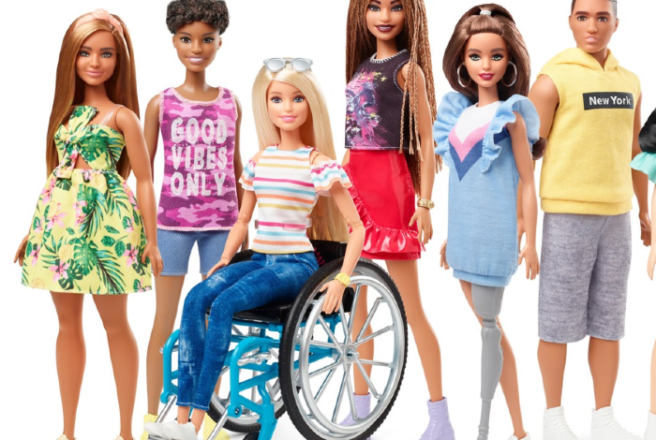
Wheelchairs and prosthetic limbs added to newest Barbie range
Barbie has just gotten WAY more inclusive, after creating dolls who are more representative of the real women and young children who play with her.
The company Mattel are making strides since they first opened in 1959 with bleach blonde Barbie with high-heels and ridiculous body proportions.
The brand are making new additions to the range which feature Barbies who use wheelchairs and with prosthetic legs.
Barbie this year will have a wheelchair, a prosthetic limb, a new type of hair, and a new body with a smaller bust, less defined waist, more defined arms. Barbie had a friend who was on a wheelchair in the 90s. The prosthetic limb is new. Can’t wait! pic.twitter.com/defIaZpkWm
—(@Bananalungs) February 8, 2019
Barbie has been given high-achiever careers as a vet, computer engineer and doctor, as well as featuring dolls who are diverse, more curvacious and black.
Two new dolls with disabilities will be added to it's Fashionista line on February 11, with the company articulating that it hopes the collection will broaden definitions of beauty.
“As a brand, we can elevate the conversation around physical disabilities by including them into our fashion doll line to further showcase a multi-dimensional view of beauty and fashion,” the company said in a statement.
Mattel’s vice president of Barbie Design, Kim Culmone, explained the latest additions were a response to phenomenal consumer demand.
"We’re going to be introducing a doll in a wheelchair and a doll representing physical disabilities. She has a prosthetic limb," Culmone told Teen Vogue.
"There will be additional body sizes — a Barbie with a smaller bust and less-defined waist. A wheelchair or doll in a wheelchair was one of the most requested items through our consumer … hotline. It's important to us to listen to our consumers."
AND we need Barbies with crutches! A Barbie with an electric wheelchair in addition to the manual one! Barbie with a service dog!
— I Am Ms. Marvel (@Stardust2187) February 11, 2019
Customers are still requesting Barbies with more impairments or disabilities, such as Down's Syndrome or blindness (hence the service dog).
Culmone also stated that the company worked with a team at UCLA and with 12-year-old Jordan Reeves, who has a prosthetic arm, to make the brand new dolls as realistic as possible.
Reeves suggested that the prosthetic limb should be removable, giving the company one of their “first big ahas”, according to Culmone. "That’s not necessarily something we would have realised how important it would be to someone living with this experience."
Feature image: Teen Vogue









